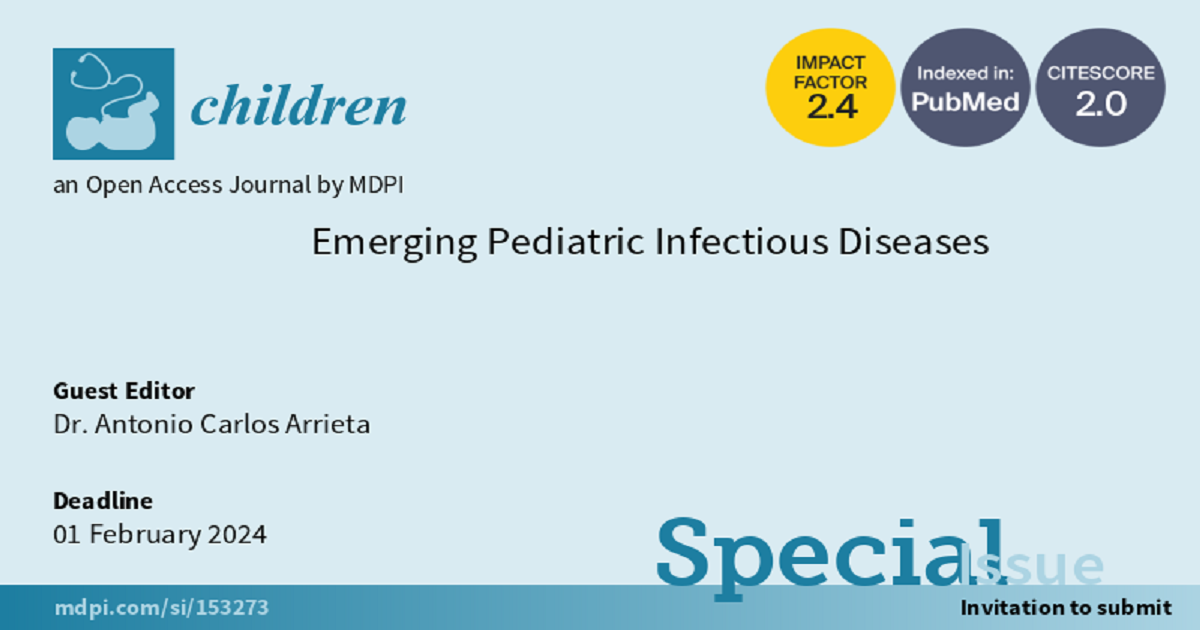Emerging Pediatric Infectious Diseases
A special issue of Children (ISSN 2227-9067). This special issue belongs to the section "Pediatric Infectious Diseases".
Deadline for manuscript submissions: closed (1 February 2024) | Viewed by 1971

Special Issue Editor
Special Issue Information
Dear Colleagues,
A number of medical advances, including new treatment regimens and bone marrow transplant modalities for cancer patients, newborn screening for primary immune deficiencies, survival of extreme premature neonates, and immune modulatory treatment strategies for many autoimmune and autoinflammatory disorders, among others, have substantially increased the number of children at risk of opportunistic infections, specifically fungal infections in pediatric patients. New antifungal agents with improved safety profiles have allowed for earlier, often empiric treatment of suspected or proven fungal infections or prophylaxis in high-risk patients such as those receiving allogeneic bone marrow transplant or those expected to exhibit prolonged neutropenia, as seen in patients undergoing treatment for acute myelocytic leukemia, and those with primary immune deficiencies such as chronic granulomatous disease. Among fungal infections, molds are more difficult to treat and are associated with high morbidity and mortality; data from randomized control treatment trials in pediatrics are lacking. Adult data followed by pediatric pharmacokinetic and pharmacodynamic data are often all the tools we have available to manage these patients. The diverse age and size of our patients (from extreme premature newborns < 1000 grams to adolescents and in some cases young adults) adds to the complexity of treating mold infections in these group. New diagnostic tools (fungal antigens, polymerase chain reaction, enhanced imaging studies, next-generation sequencing) allow us to identify these infections earlier and treat them with increasingly safer agents. Therapeutic drug monitoring and susceptibility testing when fungal isolates are available allows us to maximize efficacy while reducing risks of toxicity. Exciting new antifungal agents that will enlarge our armamentarium of drugs bring us optimism for the future.
Dr. Antonio Carlos Arrieta
Guest Editor
Manuscript Submission Information
Manuscripts should be submitted online at www.mdpi.com by registering and logging in to this website. Once you are registered, click here to go to the submission form. Manuscripts can be submitted until the deadline. All submissions that pass pre-check are peer-reviewed. Accepted papers will be published continuously in the journal (as soon as accepted) and will be listed together on the special issue website. Research articles, review articles as well as short communications are invited. For planned papers, a title and short abstract (about 100 words) can be sent to the Editorial Office for announcement on this website.
Submitted manuscripts should not have been published previously, nor be under consideration for publication elsewhere (except conference proceedings papers). All manuscripts are thoroughly refereed through a single-blind peer-review process. A guide for authors and other relevant information for submission of manuscripts is available on the Instructions for Authors page. Children is an international peer-reviewed open access monthly journal published by MDPI.
Please visit the Instructions for Authors page before submitting a manuscript. The Article Processing Charge (APC) for publication in this open access journal is 2400 CHF (Swiss Francs). Submitted papers should be well formatted and use good English. Authors may use MDPI's English editing service prior to publication or during author revisions.
Keywords
- invasive mold infections
- immune compromised hosts
- Aspergillus spp.
- Mucor spp.
- Fusarium spp.
- triazole agents
- echinocandins
- amphotericin B
- liposomal
- pediatrics






